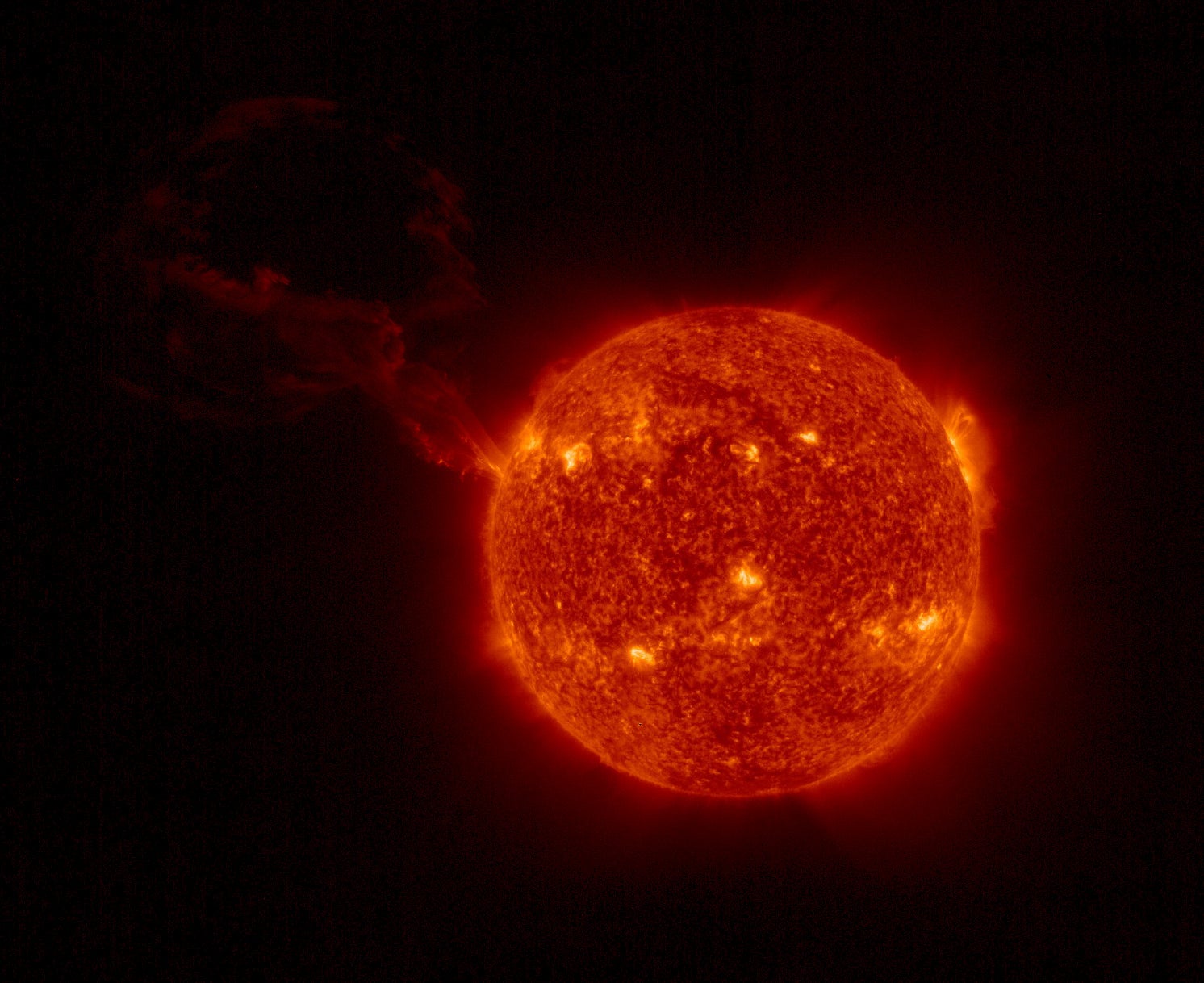Nasa spacecraft sees huge ‘eruption’ coming out of the Sun

A huge “eruption” has been spotted coming out of the Sun.
Such violent eruptions are often associated with coronal mass ejections, a cause of dramatic solar weather that can “wreak havoc with technology and our everyday lives”, according to the European Space Agency.
The “solar prominence eruption” is the biggest of its kind ever seen in one image, according to Esa and Nasa, which together operate the Solar Orbiter that took the picture.
The eruptions are made up of huge structures of entangled magnetic fields, which pack together solar plasma above the surface of the Sun. They sometimes take the form of vast arching loops, as can be seen in the new image.
The striking cloud of plasma sen in the image extended millions of kilometres into space and was captured on 15 February.
In this case, the coronal mass ejection or CME was pointing away from Earth. The eruption did not leave a signature on the solar disc as it faces the spacecraft, meaning that it must have started on its far side.
The solar orbiter is headed closer to the Sun, when it will be able to use its imaging tools to take even more detailed pictures of the Sun, which will then take up much more of its view.
But for now, as the orbiter heads towards the star, there is still space around the sides of the Sun. That “viewing margin” – which at the moment extends out 3.5 million kilmetres, or five times the radius of the Sun – allowed the spacecraft to capture the eruption in its full scale.
Scientists hope that unprecedented view can allow them to study the behaviour in more detail than ever.
They also hope that they can be combined with observations from other spacecraft studying the Sun, such as the Parker Solar Probe, which was also watching during the eruption.
Join our commenting forum
Join thought-provoking conversations, follow other Independent readers and see their replies
Comments
Bookmark popover
Removed from bookmarks